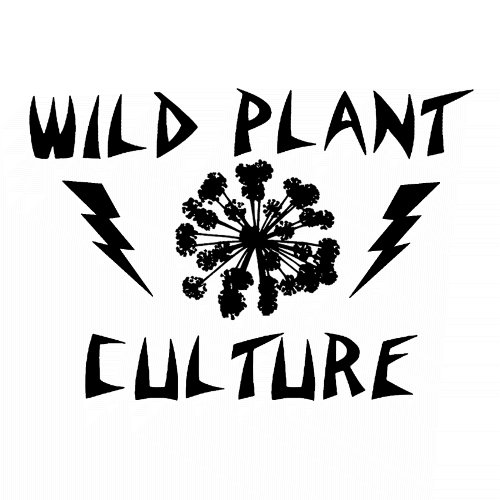Purple Milkweed

Some plants have a certain mystique due to their rarity combined with an especially compelling beauty. Purple milkweed is one of these, with its big richly hued flowers and lilting honey fragrance.
I first met purple milkweed at our former house in the Sourlands, a little cottage on the edge of a marshy meadow surrounded by big woods. One patch of purple milkweed was near a cedar tree astride a seepy wet meadow. Some sun, some shade, some moisture, some dryness. The plant seems to like transitional places - or, the best of both worlds. The other patch was among Indian grass on the side of a slightly better drained hill.
Both were on diabase geology, and this is a good substrate to find the plant on in New Jersey and Pennsylvania. Diabase weathers to create a nutrient-retentive soil high in magnesium and calcium. The plant also thrives on limestone, which has a distinctive flora that overlaps somewhat with diabase and other "mafic" rock types.
Purple milkweed (Asclepias purpurascens) has an almost spherical flower cluster that is rich reddish purple in hue, darker and larger than its close relative swamp milkweed. Unlike its other close relative common milkweed, the flowers are held upright at the top of the stem. In leaf it is quite similar. Its seedpod is smooth rather than warty, but still filled with the classic milkweed "wishies" (apologies for the botanical lingo).
Purple milkweed is uncommon in New Jersey, but not quite rare enough to make it onto the state list of plant species of concern. It might be headed in that direction, however. In New England, only five populations were known in 2001. It had previously been much more common: from the 1800s through the mid-1900s eighty-two populations had been documented. A great monograph on the conservation of purple milkweed produced by the New England Wildflower Society (read it here) conjectures possible causes:
The sheer distance between populations makes cross-pollination challenging for a species that may rely on outcrossing to produce viable seed;
A fungal infection of nectar that affects other milkweed species might be affecting purple milkweed;
The species may be vulnerable to droughts and other resource limitations;
Inbreeding depression among isolated populations;
Degradation of open habitats where it did or would thrive.
Baltimore checkerspot butterfly on purple milkweed in the Sourlands of New Jersey
Ultimately, I feel like the story of purple milkweed is reflective of a broad trend: the disappearance of specialist plant species in favor of generalists (that thrive in human-influenced conditions). Some of these specialist plants thrive in certain geologies, others with specialized disturbances like fire; some have a strong association with dwindling pollinators or dispersers, others we have no idea. Specialist plants can be long-lived, they can be very hardy, but the niches that they best fill are degraded or diminishing in our altered landscapes and the species begins to ebb into rarity, often experiencing genetic isolation and even inbreeding depression along the way. Proponents of a simplistic "survival of the fittest" may suggest that these species are not fit, but the question is, fit for what? To grow on herbicided highway margins? To be a lawn weed?
Like other species that rely on native habitats with a mix of shade and sun, purple milkweed may thrive best in a kind of open woodland that seldom exists in our area now, a habitat of treeless gaps, widely spaced canopies, and ample edges. This may seem paradoxical given all the storm damage and land clearing afoot, but perhaps our current edges are qualitatively different than the open woods created by Native American burning, now-extinct megafauna, or other vanished disturbances. It's a question I've asked in other articles on "glade", "woodland", or "savannah" species, and one that remains unsatisfactorily answered. Certainly, our current edge habitats are extremely susceptible to non-native species colonization often to the exclusion of a diverse native plant community.
One thing I notice about purple milkweed is how unreliable its seed production is. Often, the pods have been infested by the larvae of milkweed weevils and the seed is a nonviable mush. We have a few dozen planted on our farm, and while many flowered gloriously this past year, we got absolutely zero seed.
In the nursery, it is challenging to grow seedlings into healthy adults. They often grow weakly the first year, especially above-ground, as each plant works on its boney white taproot. They resent transplanting and also sitting in soupy potting soil, but don't relish drought either. Non-native slugs like to eat what little vegetable matter the seedlings offer, and what the slugs don't get, the oleander aphids will suck at later in the season. These bright yellow-orange aphids are non-native and represent yet another threat to milkweed success. To top it off, purple milkweed (and other milkweeds as well) resent overwintering in plastic nursery containers rather than in the good earth where they are shielded from extreme weather fluctuations. So the raggle-taggle seedlings the nurseryman or woman has shepherded successfully to the fall will like as not be dead by spring.
We grow and sell purple milkweed at Wild Ridge Plants. How could we not? It's a fragrant beauty and we have a sentimental attachment to it. If it wasn't so finicky we could grow thousands and maybe retire early (or ever). But if it wasn't so difficult, everyone would grow it and then we probably wouldn't be retiring after all. Meanwhile, we continue to innovate ways to grow purple milkweed that is more to the plants liking. As hard as they are to grow and transplant, once established they grow strong and robust - having invested several years in a high quality root system, they appear ready to persist through any conditions for decades to come. That's how it is with some of the most reticent herbs - slow to get started but rare beauties once they're fully developed.
Purple milkweed seedlings at Wild Ridge Plants

